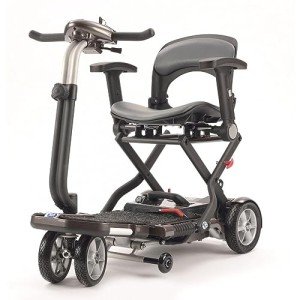10 Mobility Aids Tricks All Experts Recommend

Understanding Mobility Aids: Enhancing Independence and Quality of Life
As society continues to age and people progressively look for methods to keep self-reliance, the demand for mobility aids has actually never been more relevant. Mobility aids, which encompass a series of devices created to help people with strolling or walking around, play an important function in promoting mobility, enhancing safety, and enhancing total quality of life. This article will check out the numerous kinds of mobility aids, their advantages, factors to consider for selection, and answer some often asked concerns.
Types of Mobility Aids
Various mobility aids are available, each designed to address specific needs. The following table sums up some of the most common kinds of mobility aids and their functions.
| Type of Mobility Aid | Description | Best Suited For | Key Features |
|---|---|---|---|
| Canes | A portable stick offering support and balance. | People who need minimal help. | Light-weight, portable, adjustable height. |
| Walkers | Four-legged frames providing stability. | Those requiring considerable support while strolling. | Foldable, some with wheels, included safety features. |
| Rollators | Wheeled walkers with a seat for resting. | People needing mobility with the option to rest. | Brakes, baskets for individual products, adjustable height. |
| Wheelchairs | Chairs with wheels for people with restricted mobility. | Those not able to walk or needing extensive assistance. | Manual or powered choices, personalized seating. |
| Scooters | Motorized devices for larger ranges. | People with restricted endurance however needing self-reliance. | Various sizes and styles, often transportable. |
| Crutches | Assistance devices placed under the arms or lower arms. | Individuals recuperating from lower limb injuries. | Adjustable, lightweight, needs upper body strength. |
| Stairlifts | Mechanical devices for moving between floors. | Users dealing with challenges in multi-level homes. | Adjustable for different staircases, automated. |
Advantages of Mobility Aids
Mobility aids offer a selection of benefits that can significantly improve the lives of people facing mobility difficulties. Some significant benefits include:
- Increased Independence: Mobility aids empower people to move freely without depending on others for assistance, consequently improving their self-confidence and self-confidence.
- Improved Safety: Using mobility aids can decrease the risk of falls and injuries, particularly for older adults or those with balance issues.
- Enhanced Quality of Life: By helping with mobility, individuals can engage in social activities, go to occasions, and enjoy life more completely, contributing to much better psychological and mental health.
- Rehabilitation Support: After surgery or injury, mobility aids provide needed support and stability, assisting in recovery and rehabilitation processes.
- Accessibility: Many mobility aids are designed to be utilized both inside your home and outdoors, guaranteeing that people can navigate different environments with ease.
Elements to Consider When Choosing Mobility Aids
Picking the suitable mobility help needs mindful factor to consider of numerous elements, consisting of:
| Factor | Considerations |
|---|---|
| User's Needs | Assess the level of mobility needed; think about whether the user needs momentary or long-term support. |
| Physical Limitations | Examine the user's strength, balance, and coordination to figure out the best kind of aid. |
| Setting | Consider the primary environments where the help will be used, such as home, outdoors, or specific surfaces. |
| Weight and Portability | Guarantee that the chosen device is manageable regarding transportability and storage, particularly for outdoor use. |
| Budget plan | Mobility aids been available in a variety of costs; think about insurance protection and offered financing choices. |
| Adjustability | Pick aids that can be changed for height and comfort to accommodate growth or altering requirements. |
Frequently Asked Questions About Mobility Aids
1. How do I know if I require a mobility help?
Lots of elements can signify the requirement for a mobility help, such as difficulty walking or balancing, tiredness while standing, or a recent surgical treatment affecting mobility. Consulting with a health care professional can provide assistance customized to individual needs.
2. What kinds of mobility aids are covered by insurance coverage?
Protection varies between insurance companies, however a lot of provide choices for long lasting medical equipment, which usually includes wheelchairs, walkers, and some kinds of canes. Inspect with your insurance supplier for specific protection information.
3. Can mobility aids be utilized outdoors?
Yes, lots of modern mobility aids are developed for outdoor use. Rollators, scooters, and some walkers are equipped with features for stability and ease of use on different terrain.
4. How do I preserve my mobility help?
Routine upkeep involves looking for any wear and tear, making sure that parts such as wheels, brakes, and frames are working properly, and cleaning the equipment as needed. Following folding travel scooters is essential for security.
5. Is there a threat of becoming based on mobility aids?
While some users may become reliant on mobility aids, they are designed to promote self-reliance and mobility. Gradually using a mobility help can boost confidence and help keep physical strength and coordination.
Mobility aids are vital tools that empower people to get rid of physical challenges, promoting self-reliance and boosting lifestyle. By understanding the different kinds of mobility aids offered, their advantages, and important elements for consideration, households and caregivers can make educated choices that best satisfy the needs of their liked ones. With the right assistance, those with mobility obstacles can lead fulfilling and active lives, complimentary to check out the world around them.

